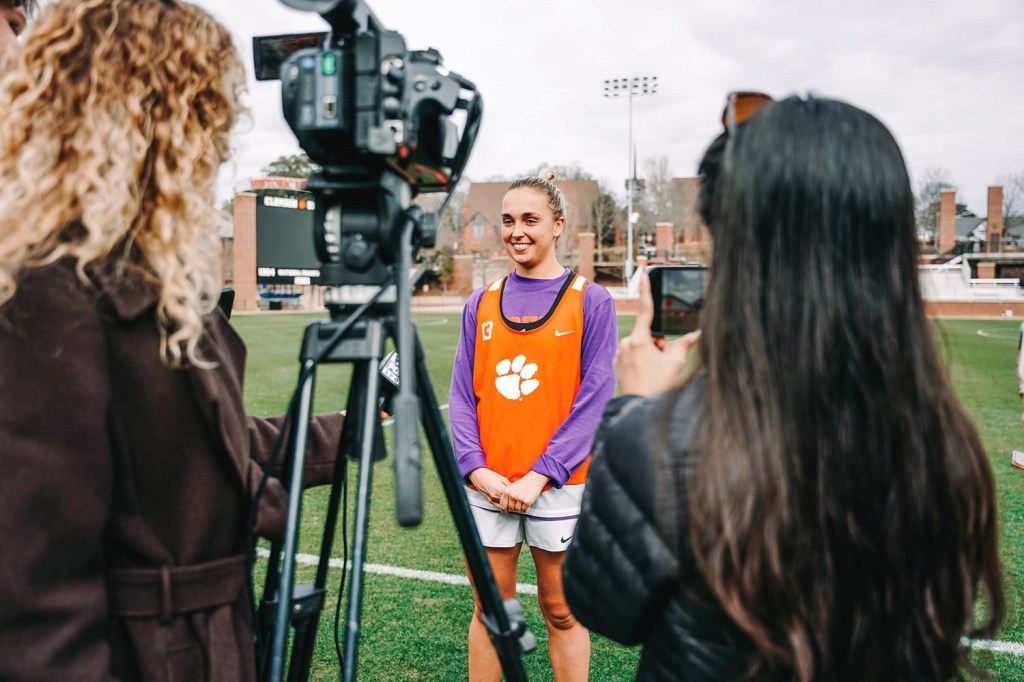
As the Mountain West enters its 20th season, the conference is fully embracing its role as a guinea pig for the rest of the NCAA.
The conference was the first to launch a 24/7 linear TV network, The Mountain West Sports Network, in 2006, a year before the Big Ten Network. It was also the first conference to sign with Precision Timing Systems in 2003 and work with DVSports basketball instant replay system, and the first conference to broadcast on Twitter and Facebook. And it’s all in the spirit of why the conference was started in 1999.
“Since the beginning of the Mountain West, we try to be progressive with what we do,” said Dan Butterly, senior associate commissioner of the Mountain West. “We love being innovators, we cherish the opportunity to be guinea pigs. We’re willing to test the water, jump in the pool and see how many follow.”
As it happens, Butterly said it’s more than luck the conference has been able to be the first to many innovations to the college game, especially as technology changes so quickly. While most, if not all, conference and school administrators are trying to stay up-to-date on where the world is going and where fans are, Butterly said the simple step to take is picking up the phone.
“You take phone calls,” he said. “It’s just looking at opportunities and not passing them up and learning what the next innovation will be. We want to be where our fans are.”
This year, the conference will broadcast seven football games on Facebook in partnership with Stadium. It’s the third year the two entities have partnered for Facebook broadcasts.
The latest example could be ShotTracker, which the Mountain West recently received a waiver from the NCAA to use on-the-sidelines during games once the conference slate starts in December. Butterly said the current generation of players has grown up surrounded by technology, so it only makes sense to incorporate to help progress the game.
“It makes our players and coaches more efficient, they’re not waiting for stats at halftime or during timeouts,” Butterly said. “They’ll have all the data during play, so they can make adjustments during timeouts, go into the huddle with the tech and say, if you do XYZ we’ll be a better program. It’ll help improve the Mountain West.”
As part of the ShotTracker waiver, the Mountain West will be required to submit data to the NCAA to evaluate its long-term potential. Overall, the NCAA does seem to be interested in where technology can take college sports, according to comments made to Forbes by Art Hyland, NCAA men’s basketball rules committee secretary-rules editor.
“I think the stakeholders of college basketball are now committed to investigating the use of technology on our benches for men’s basketball,” Hyland said. “I think there is an avid interest in technology moving forward.”
Since the conference’s matchups begin earlier than most other conferences, Butterly expects the games to be must-see TV for coaches across the country to see how the technology might affect game decisions.
The conference network isn’t still around, having shut down in 2012, but it helped push the envelope in the mid-2000s and ultimately helped the conference establish relevancy as Utah, TCU and Boise State had national success. Butterly said cutting ties with ESPN to partner with CSTV was a big risk and could have turned out negatively. Instead, CSTV turned into CBS Sports Network and a positive relationship with ESPN was maintained, resulting in deals with both.
“It certainly didn’t hurt us, it helped broaden our reach,” he said.
As a mid-major conference, the Mountain West is provided some flexibility to be more nimble than the Power Five conferences. But it’s the relative size and recent sports success also provides some leverage when it comes to setting standards, Butterly said.
READ MORE: NWHL Signs Live Streaming Deal With Twitch
He said a major reason collegiate athletics isn’t as nimble as professional sports is the sheer number of teams and the disparity between them, whereas pro leagues are largely made up of approximately 30 teams and driven by a single entity.
Butterly said conversations with other conference offices show the Mountain West team they’re doing something right and have others lining up behind them.
“There’s a great disparity between those programs that have a lot of success and those that are just trying to compete,” Butterly said. “It’s nice to be innovative and be out in front. But it’s not like we’re doing it without vetting things. When we see something that benefits the conference, we go with it.”

















